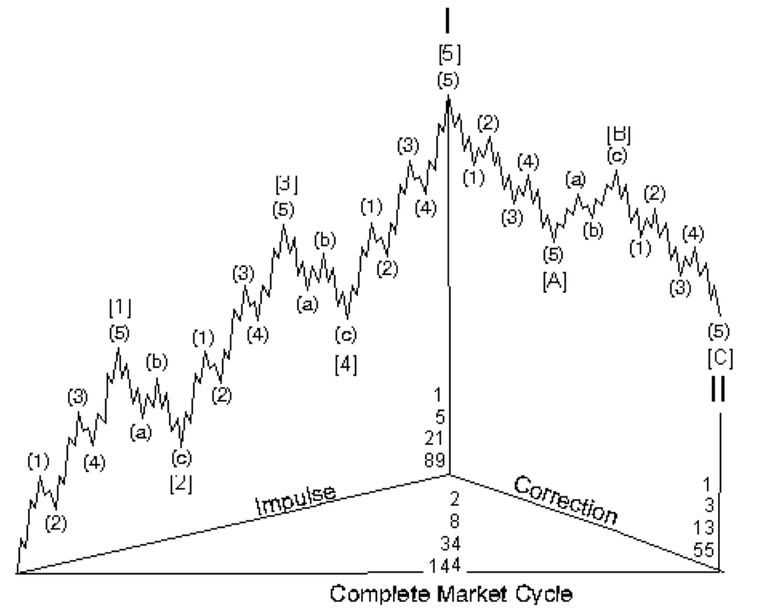Developed by Ralph Nelson Elliott in the 1930s, Elliott Wave Theory proposes that market prices move in predictable patterns, influenced by mass psychology.
These patterns are called waves, and they can be impulsive (trending) or corrective (countertrend).
There are five impulsive waves that make up the main trend (up or down) and three corrective waves in a counter-trend direction. Here's a breakdown of the wave structure:

Elliott Wave Principle
- Impulse Waves:
- Wave 1: The beginning of a new trend, often weak and choppy.
- Wave 2: A corrective pullback of wave 1.
- Wave 3: The strongest trend wave, with the most significant price movement.
- Wave 4: A corrective pullback of wave 3, typically shallower than wave 2.
- Wave 5: The final wave in the trend direction, extending the move of wave 3.
- Corrective Waves:
- Wave A: The first counter-trend wave.
- Wave B: A corrective pullback of wave A.
- Wave C: The final counter-trend wave, usually the deepest correction.
Applying Wave Theory
Applying Elliott Wave Theory involves identifying these wave patterns within the price chart. However, it can be subjective and requires experience and interpretation. Some technical indicators can be used alongside wave theory to help identify potential wave patterns. These include:
- Fibonacci retracement levels: These levels can help identify potential support and resistance zones within the wave structure.
- Moving averages: These can be used to identify the overall trend and potential turning points.
- Relative Strength Index (RSI): This can be used to gauge momentum and potential overbought or oversold conditions, which can be helpful in identifying potential wave tops or bottoms.
Strengths and Weaknesses of Wave Theory
Strengths:
- Can identify potential turning points in the market.
- Provides a framework for understanding market psychology.
Weaknesses:
- Subjective and open to interpretation, leading to disagreements about wave counts.
- Not always accurate in predicting future price movements.
- Requires experience and skill to apply effectively.
Can Wave Theory Be Applied to the Image?
Unfortunately, I cannot analyze the specific tweet or image due to access restrictions. However, based on the limitations of Wave Theory, here are some general considerations:
- Wave theory can be challenging to apply in volatile markets like cryptocurrency.
- Identifying the correct wave structure can be subjective and lead to different interpretations.
- Even if the wave structure is correctly identified, it doesn't guarantee future price movements.
Overall, while Wave Theory can be a helpful tool for analysis, it should be used in conjunction with other technical indicators and fundamental analysis for a more comprehensive understanding of the market.